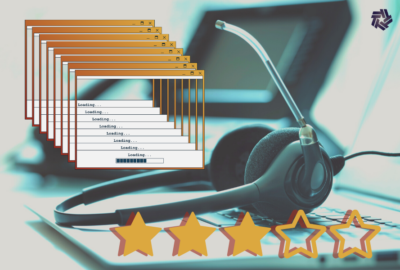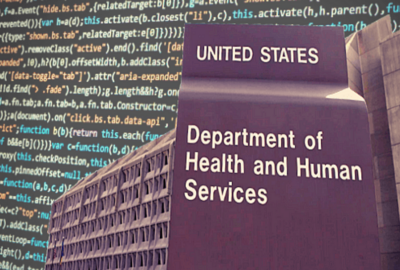EEOC CIO Hancher to retire, but not before meeting a few more goals
Kim Hancher is calling it a career after 34 years in government, including the last seven as the CIO of the Equal Employment Opportunity Commission. She said sh...
wfedstaff | June 4, 2015 7:53 pm
Kim Hancher is retiring from government after spending the last 34 years moving up the ranks of the federal IT world. But before she leaves as the chief information officer at the Equal Employment Opportunity Commission later this spring, Hancher wants to ensure her agency is well prepared for the future, especially around cybersecurity and cloud. Both technologies are part of her efforts to help the EEOC overcome budget and workforce challenges.
Hancher has set a strategy for EEOC to continue its move to the cloud through software-as-a-service for new applications.
At the same time, Hancher is positioning EEOC to deal with the rising cyber threats. She said over the last year, cybersecurity has been one of her most challenging problems.
“We’ve had exploits of malware and viruses and I’ve had the recognition that it’s close to impossible to keep out the bad guys,” Hancher said. “It’s an important thing to continue to improve our threat protection and this year what I’ve learned is how to contain threats once they are exploited in our networks. My CIO role has changed dramatically in that I no longer can totally delegate IT security to the chief information security officer. Indeed a good part of my day, at least an hour, is spent on IT security because it needs my attention, I need to understand where the vulnerabilities are and where the corrective actions are needed, and I need to give guidance about issues we are facing.”
But Hancher’s time in government is short to work on these issues, which is why she is trying to get all the strategies in place now. She decided to retire from the EEOC at the same time her husband is calling it a career from his position as an architect for the Veterans Affairs Department.
“The agency will be recruiting a new CIO and it’s an exciting opportunity to bring in some new blood,” Hancher said. “I will be happy to do an orderly transition of knowledge management to whoever that the new CIO will be. I haven’t really thought about what I will do after federal service.”
Hancher started her federal career in 1981 as a temporary policy analyst for the Education Department and moved to VA in 1983 where she moved into IT and helped the agency implement the first email system.
“We really brought dramatic change in that agency. It had operated essentially as different departments, and the email system really helped blend that organization and provide really a channel of communications across hundreds of thousands of workers that had never existed before. That was one of my key contributions during my 15 years at VA,” she said.
Hancher then moved to the Federal Communications Commission in 1998 to work on e-government systems to eliminate paper transactions, and on the Year 2000 switch over.
By 2008, Hancher took on her next challenge as the EEOC CIO.
“When I came to the EEOC as the CIO, I really felt like I achieved my career goal. I always wanted to be the boss, the boss of IT. It’s an area I just love,” she said. “I find technology to be constantly challenging and the role of government IT executive is one I hold dear.”
So over the next few months, Hancher said she has plenty of work to do, starting with the continued training of the IT staff to use agile software development processes.
“We’ve got one government manager who is a scrum master, and we’ve got a number of people who’ve been through agile project management training and agile development processes,” Hancher said. “We are really working on applying some of the concepts from agile in our environment.”
This workforce development effort actually started in 2010 when EEOC hired five experienced project managers and started training and certifying other staff members in the IT Information Library (ITIL) standard.
“Slowly but surely we’ve obtained close to 30 percent of certification for ITIL for the IT workforce,” she said.
The timing of both of these efforts coincided with EEOC’s move to the cloud.
Hancher said in February the agency transferred several mission critical systems to a managed cloud provider from the agency’s on-premise data center.
“We had been planning that for six months. We have a lot invested in those systems. They are used by about 2,000 EEOC employees and 1,000 state and local government entities,” she said. “It was not just our integrated mission system, but our document management system and our business intelligence reporting systems. Three major systems were brought up in the cloud and made available to that community.”
Hancher said over the next few years EEOC will continue this path of moving applications to the cloud.
EEOC also is in the midst of moving its financial management system to the Interior Business Center’s shared services in the cloud. Hancher said while the financial management staff at the agency is doing most of the heavy lifting, she said the IT organization is helping with data and interface issues.
EEOC, along with the Labor Department, was forced to move its financial system after its vendor, GCE, went bankrupt in in September.
RELATED STORIES:
Budget pressures force EEOC to shift gears
Copyright © 2024 Federal News Network. All rights reserved. This website is not intended for users located within the European Economic Area.
Jason Miller is executive editor of Federal News Network and directs news coverage on the people, policy and programs of the federal government.
Follow @jmillerWFED







